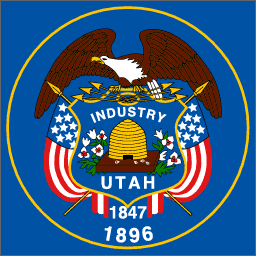Stardust Probe Will Land In Utah
This Sunday, a space probe containing dust collected from a comet will land in Utah's west desert.
The probe's samples represent material likely present at the formation of the solar system. Scientists hope that study of these samples will reveal more about the nature and process of the solar system's formation.
From the New York Times:
Plans call for Stardust to release its 101-pound sample return capsule on Sunday at 12:57 a.m. Eastern time, when the spacecraft is 68,805 miles from Earth. About 15 minutes later, the main spacecraft is to fire thrusters that divert it from Earth into an orbit around the Sun.While the exact landing area has not been made clear, I presume it is out on the Dugway Proving Grounds - a nice, big, secure area.
Four hours after release, the three-foot-wide return capsule is to enter the Earth's atmosphere at 410,000 feet above the Pacific. At 28,860 miles an hour, this will be the fastest a human-made object has ever entered the atmosphere. At 200,000 feet, the capsule's heat shield will reach a peak temperature of 365 degrees Fahrenheit, followed 10 seconds later by peak deceleration as the capsule experiences 38 times the force of gravity.
The fireball of the descent should be visible from areas in Northern California, Southern Oregon, Northern Nevada, Southern Idaho and Western Utah, depending upon clouds and the brightness of the Moon, NASA officials said.
At about 100,000 feet, a small pilot parachute is to deploy, and the capsule will begin a vertical descent to 10,000 feet, when the large main parachute will unfurl to lower the craft to the ground at less than 10 m.p.h..
Specialists aboard helicopters or all-terrain vehicles are to converge on the capsule to secure it and document its landing area. From there the space cargo is to be transferred to a temporary, special "clean room" in a hangar at Michael Army Air Field to avoid contamination and then moved to a special laboratory at the Johnson Space Center in Houston.
Dr. Brownlee said Stardust's cargo should contain more than a million particles weighing in total less than a small fraction of an ounce, with only about 2,000 being as large as the diameter of a human hair. But because scientists will be examining them on a molecular scale, he said, they will look like "huge, giant rocks."
There should be enough samples to occupy scientists for decades without consuming them all, he said.
No word on whether precautions have been made against an Andromeda Strain-type situation, either. But Dugway is nice and isolated...


0 Comments:
Post a Comment
<< Home